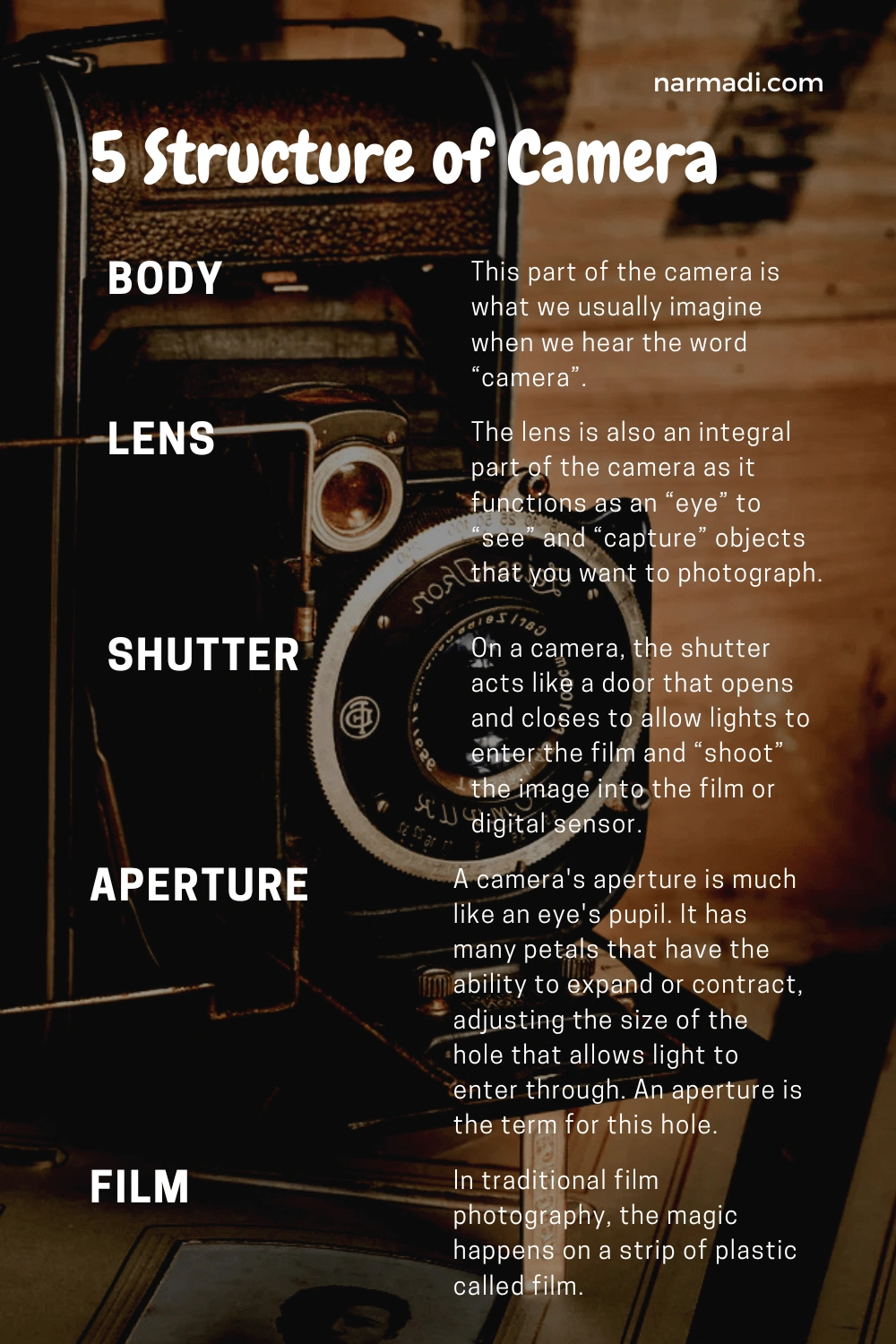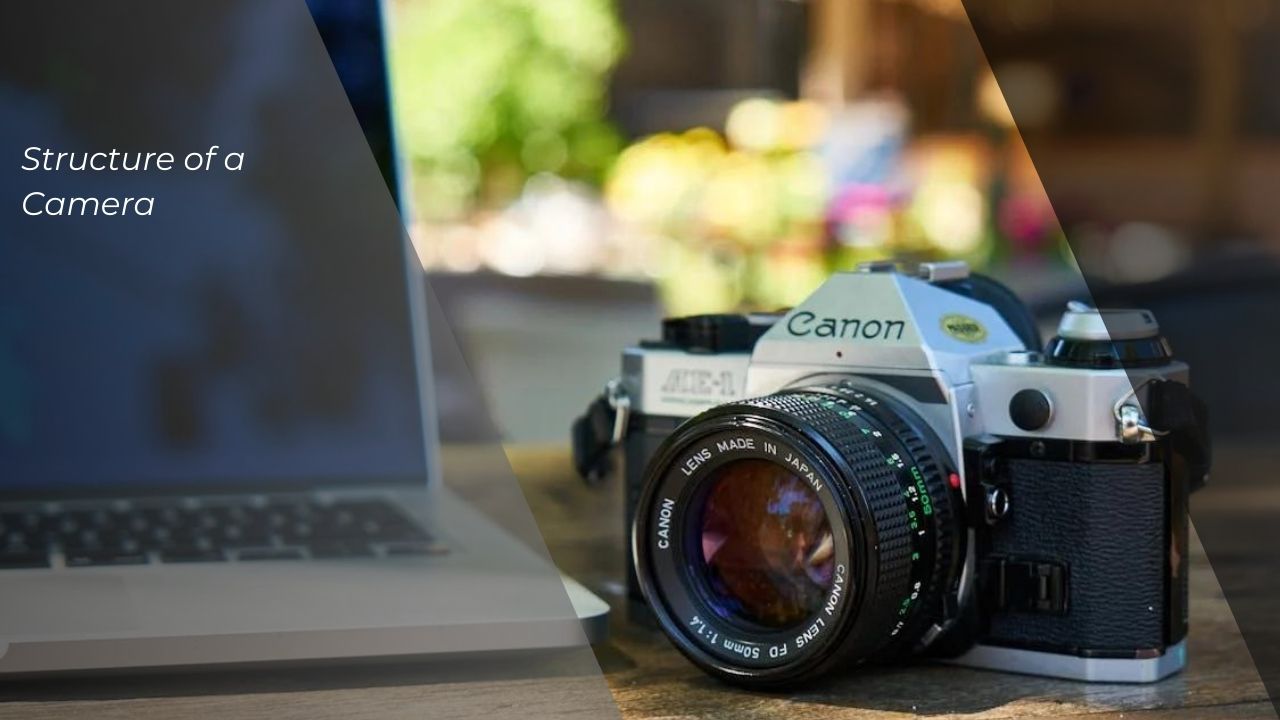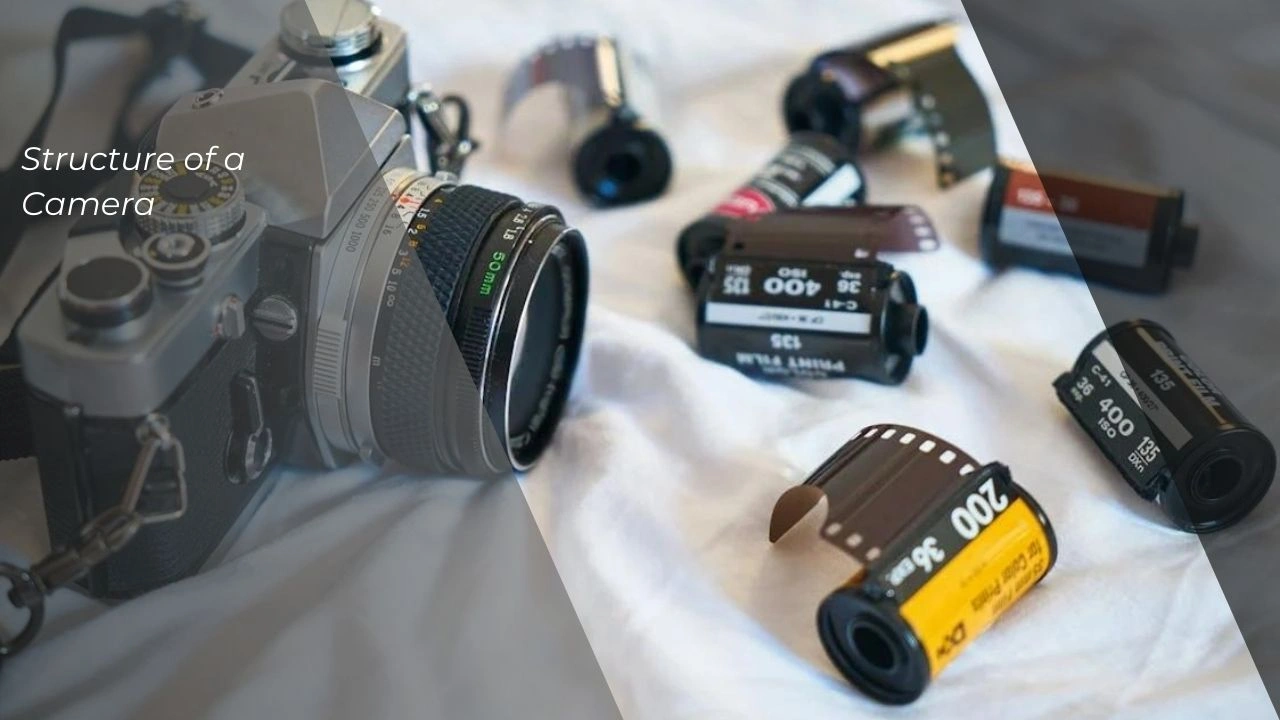What are the structure of camera? Let’s find out here!
Table of Contents
Structure of Camera

Using a typical SLR camera as an example, we will discuss the construction of a camera. To avoid confusing you, we won’t get too far into depth here, but we will go over the key parts of a camera.
1. Body

The first one is the body, this part of the camera is what we usually imagine when we hear the word “camera”.
Also Read
The function of the body in a camera is to hold all parts of the camera together, and to protect internal parts from getting exposure to the moisture from the outside. It also serves as a protector of the film to ensure it is in the best quality.
The body of a camera consists of a lot of parts and components including the shutter, rewind mechanism, and others.
2. Lens
The second structure of camera is the lens. The lens is also an integral part of the camera as it functions as an “eye” to “see” and “capture” objects that you want to photograph.
It consists of several lenses that work like a magnifying glass that helps to focus the light so a clear image is formed on the film or digital sensor.
Also, there are a lot of types of lenses with a lot of purposes, some are to help you to take a picture of objects that are far away, and the others are better for capturing a wide landscape or large group of people.
3. Shutter
The next structure of camera is the shutter. On a camera, the shutter acts like a door that opens and closes to allow lights to enter the film and “shoot” the image into the film or digital sensor.
And the “shutter speed” or “exposure” is the term in which a controlled amount of time light is exposed to the film or digital sensor.
The longer shutter speed is, making the shutter open for a longer time and allows a lot of light to hit the film, that’s why a longer shutter speed is better for shooting in the dark.
On the other hand, keeping it open for a very short time will help you capture an object that moves very fast without blurring.
4. Aperture
A camera’s aperture is much like an eye’s pupil. It has many petals that have the ability to expand or contract, adjusting the size of the hole that allows light to enter through. An aperture is the term for this hole.
The aperture of the camera is used to control the amount of light that strikes the film inside. A big aperture, often known as a wide open aperture, allows a lot of light to enter the camera, making it useful for photography in low light.
And on the other hand, if less light enters a hole with a narrow aperture, it will be appropriate for extremely bright lighting.
5. Film
In traditional film photography, the magic happens on a strip of plastic called film. This film is coated with a special layer that’s sensitive to light. When light travels through the lens and aperture, it strikes this layer, triggering a chemical reaction.
Read also: How Film Camera Work
This reaction creates an invisible image, called a latent image. This hidden image is then brought to life through a development process using special chemicals, revealing the captured photo.
So there you go a structure of camera!


















